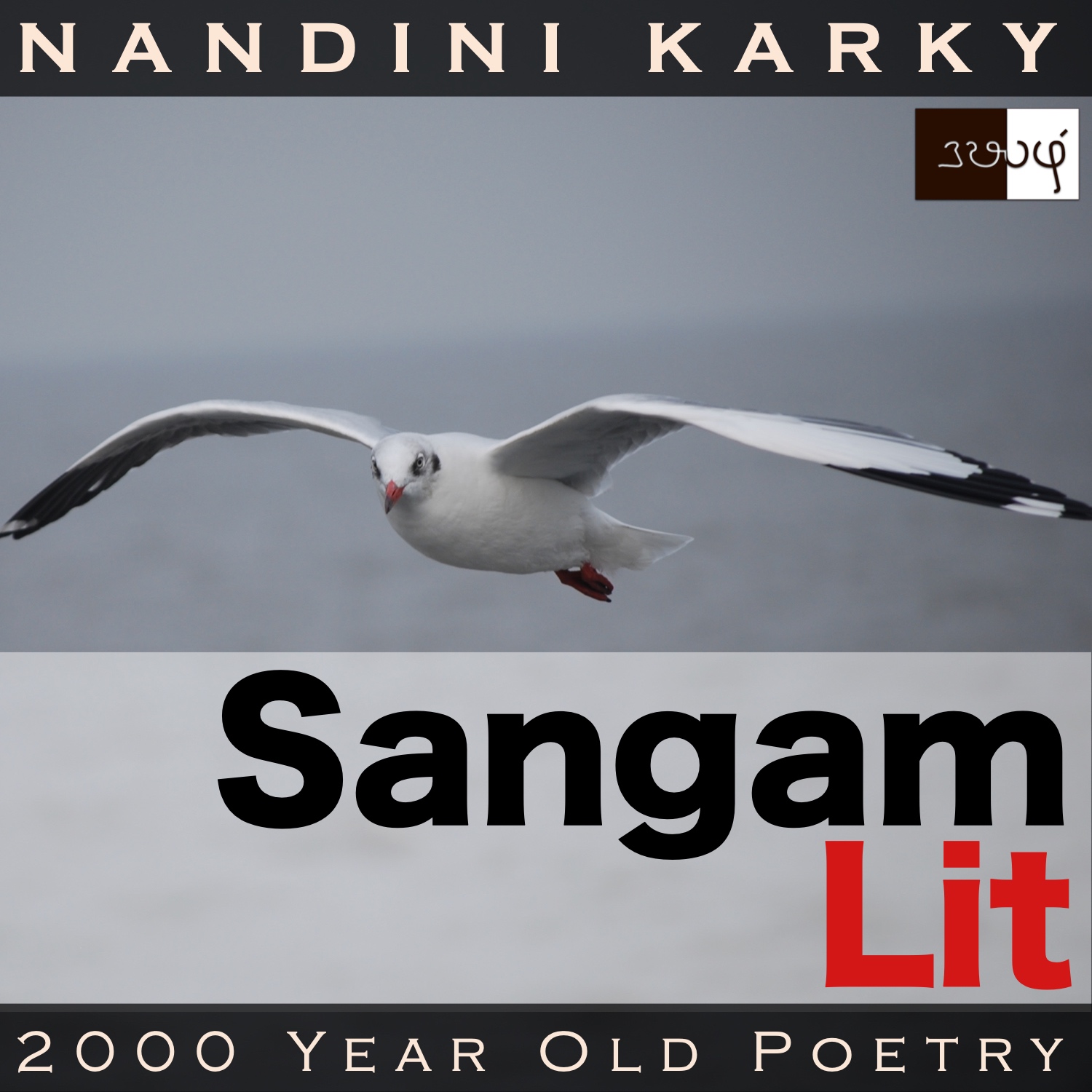Podcast: Play in new window | Download
Subscribe: Apple Podcasts | Spotify | Amazon Music | Android | iHeartRadio | TuneIn | RSS | More

In this episode, we perceive the inner life depicted in Sangam literary work, Natrinai 31, written by Nakkiranaar, set in the ‘Neythal’ landscape or the coastal regions, in the words of the lady to her confidante, about her state of mind.
மா இரும் பரப்பகம் துணிய நோக்கி,
சேயிறா எறிந்த சிறு வெண் காக்கை
பாய் இரும் பனிக் கழி துழைஇ, பைங் கால்
தான் வீழ் பெடைக்குப் பயிரிடூஉ, சுரக்கும்
சிறு வீ ஞாழல் துறையுமார் இனிதே;
பெரும் புலம்பு உற்ற நெஞ்சமொடு, பல நினைந்து,
யானும் இனையேன்-ஆயின், ஆனாது
வேறு பல் நாட்டில் கால் தர வந்த
பல உறு பண்ணியம் இழிதரு நிலவுமணல்
நெடுஞ் சினைப் புன்னைக் கடுஞ் சூல் வெண் குருகு
உலவுத் திரை ஓதம் வெரூஉம்
உரவு நீர்ச் சேர்ப்பனொடு மணவா ஊங்கே.
Even on first parse, the poem echoes with a lot of feeling. Contrasting feelings too! There was ‘இனிதே’ meaning ‘happy’ on one hand and following it, was the phrase ‘பெரும் புலம்பு உற்ற நெஞ்சமொடு’ meaning ‘a heart burdened with much sadness.’ Then, hiding in between, were little fish, those one letter words that seemed to convey the vastness of the ocean entire. For instance, a word like ‘மா’ which here pertains to ‘great’. Is it only a coincidence that the word for ‘mother’ in many languages involve this same syllable, ‘ma’? I learnt that the single-letter word ‘வீ’ means a flower. So much beauty in something so little! The expression ‘நிலவுமணல்’ caught my attention, for it means ‘moon-sand’, a poetic way to say that the shore was filled with white sand, shining like the powder of the moon afar. Also, came to know that ‘கால்’ which we usually associate with ‘leg’, in this instance means, ‘the wind’. The phrase ‘run like the wind’ suddenly looks exciting to me, in Tamil. Finally, there was the promise of birds and trees, for us to gaze at and to be inspired, on this ancient shore.
We see how the dots connect when we perceive the context of the poem. The lady is separated from her man who has parted away on a task. Completing that task, he returns. The lady’s confidante, knowing that he’s within earshot, does not inform the lady that he’s arrived but asks her to observe the beautiful scenes in the shore and indirectly tells her that he will be back soon and be united with her. To this, the lady replies, “Peering inside the wide and dark expanses of the ocean, diving into cold, dark backwaters, the little sea-gull pounces on the roving, red shrimps and having caught hold of it, searches for its slender-legged mate and shares its catch. Such scenes in the seaport adorned with small flowers of the ‘gnazhal’ are sweet indeed. But, this was before I united with the lord of the seas, in whose shore filled with moon-like sand, lie scattered exotic things that were brought from countries afar by the ships on the wings of the wind, a shore filled with ‘punnai’ trees with tall and spreading branches, on which stands in fear, a pregnant egret, scared of the roars of the roving waves. Unlike those happy days before I saw him, now, I have lost my peace and have turned into someone with a heart burdened with great sadness, thinking many distressful thoughts.”
Let’s first observe the outer world depicted in the poem. There are two contrasting scenes: One where the ‘gnazhal’ or the tigerclaw trees bloom, with their golden flowers and where you see a sea-gull searching the cold waters for a catch, finding its prey and then flying towards its mate to share it. Such golden scenes of love and joy; The other, where the ‘punnai’ or the laurel wood trees abound with tall, spreading branches, where a pregnant egret is resting and is scared to venture out, hiding in fear of even the sound of the ocean’s waves. Now, both the scenes are very much in the same hamlet where our lady lives. A fine point she makes saying that she could perceive those pleasant scenes only before her pain of separation started. But now, in the same place, her eyes turn towards elements expressing anxiety and fear like that pregnant egret, alone in her nest high above. I’m stunned that an ancient verse expresses so acute an understanding of the human mind. With its rich and contrasting imagery, it seems to declare that, “We do not see what is there. We see what we are!’




Share your thoughts...